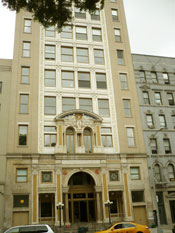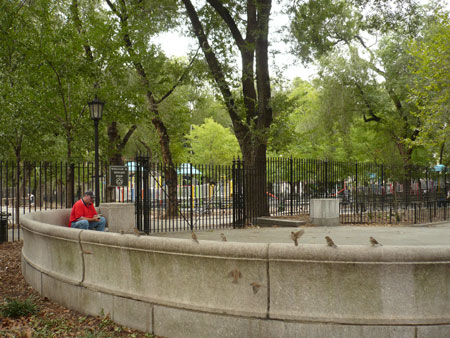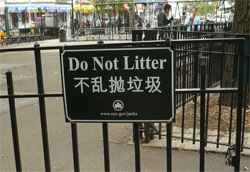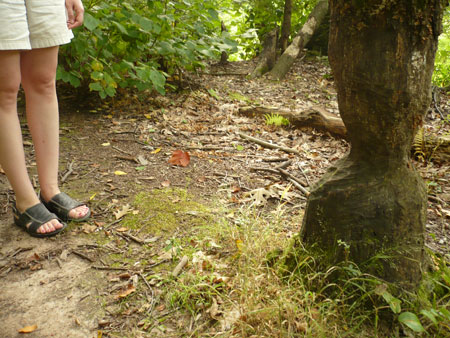
Some of the surrounding buildings, like the former Jewish Daily Forward Building
 and the handsome 1909 Seward Park Library, are more interesting-looking than anything in the park itself, which in terms of activity seems mostly focused on its playgrounds.
and the handsome 1909 Seward Park Library, are more interesting-looking than anything in the park itself, which in terms of activity seems mostly focused on its playgrounds. 
The north playground, according to the Parks Department website, opened in 1903 as "the first permanent, municipally built playground in the United States." Pretty historic, but not much to look at.

The park is named for William Seward, an impressive statue of whom commands the southwest corner of the much prettier Madison Square Park a few neighborhoods to the north.
 What Seward Park lacks in beauty it seems to make up for in unexpected Sewardine semiotics, such as a "Mount McKinley" play unit honoring "Seward's Folly"—Alaska. I prefer the more obvious signage, though, like the superbly ungrammatical "Please Flush" notice in the men's room.
What Seward Park lacks in beauty it seems to make up for in unexpected Sewardine semiotics, such as a "Mount McKinley" play unit honoring "Seward's Folly"—Alaska. I prefer the more obvious signage, though, like the superbly ungrammatical "Please Flush" notice in the men's room. 
That's right—this is one of those parks with public toilets. Make a note of it.
One more thing: the Parks Department thinks that Seward Park is the ideal opportunity to talk about beavers, apparently because the city flag appears in the park and it features a beaver. (Beavers, as any aficionado of early New York history knows, were critical to the economy of the early Dutch colony). As it happens, we recently visited a park just a couple of hours from the city that's loaded with beavers (or "loaded with beaver" as a pelt hunter probably would have said): Mount Tom State Reservation in Massachusetts. We didn't see any of the big rodents, but found plenty of evidence of their eagerness and busyness, including an abandoned dam and many chewed and toppled trees. So if you're interested in beavers, head up to Mt. Tom, not Seward Park. Here's a tree from up there, half-chewed-through by beavers, accompanied by a pair of human legs artfully presented for scale.

No comments:
Post a Comment